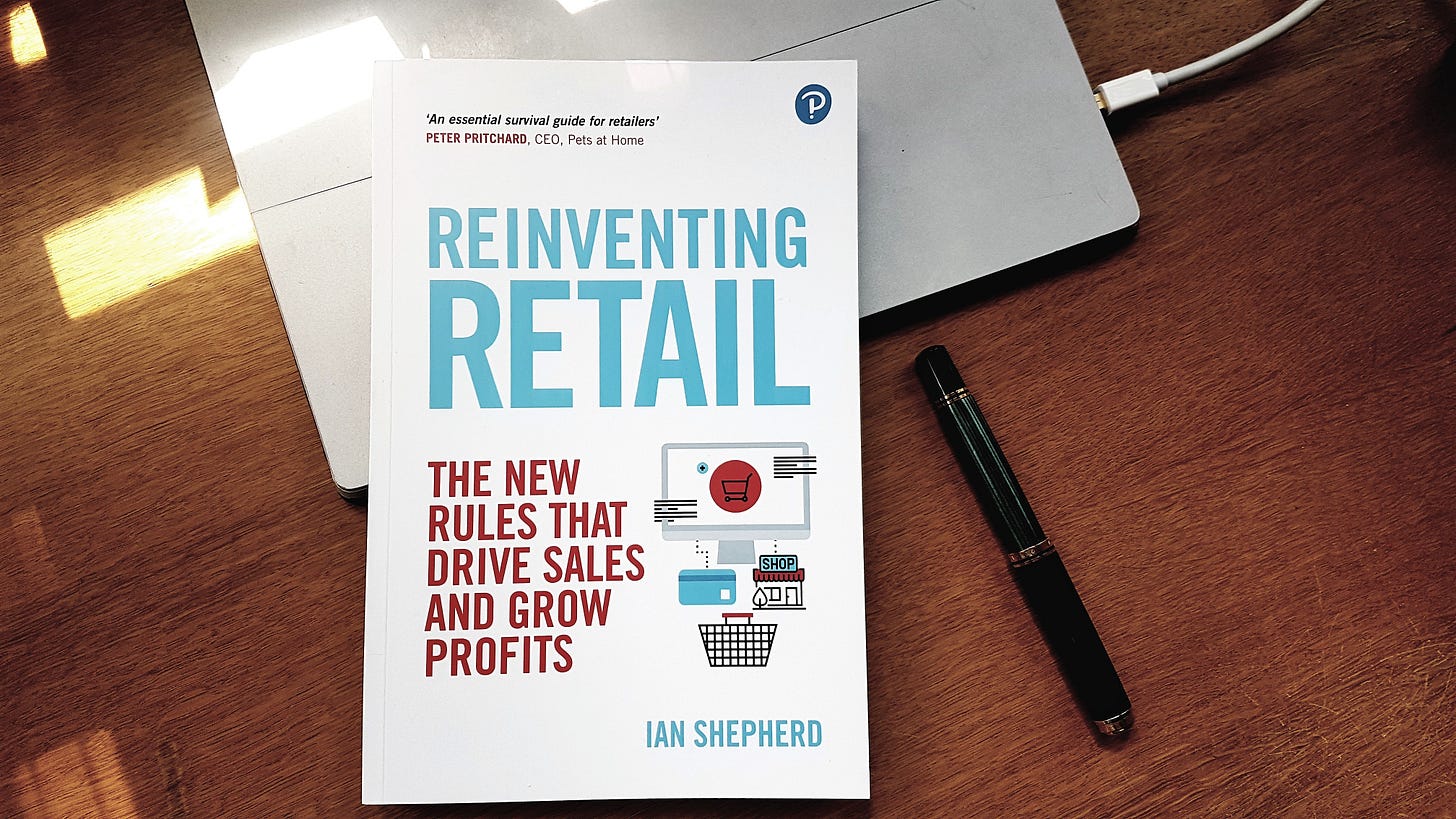Fair shares
A key, but often overlooked, KPI
In last week’s post on the impact of the UK budget, I said “As a practical measure, as I’ve written about before here at Moving Tribes, now is the time to make sure you have a clear view of market share”.
An eagle-eyed reader asked me where exactly I had written about market share in this way, and the embarrassing answer was “not on these pages”. It is a topic I’m very passionate about and one I explored in detail in my book, Reinventing Retail, but have not revisited here. Let’s fix that now - what follows is an abridged and updated extract from the book (which I highly recommend as a stocking filler for the whole family!).
Market share - a critical KPI
I often ask a simple question of retailers I work with. What is your market share?
The answer can be fascinating. Firstly, it is interesting that the information is often not readily available in any form. That’s a red flag for any business. Over my career, I've observed a strong correlation between those businesses which have a clear, frequently measured and widely discussed market share report, and those which win.
There are, of course, reasons why market share reports sometimes send the wrong signal. An obsessive and wrong-headed over-focus on market share can lead to price wars, for example. But that is true of any single KPI and is the reason why strong businesses use 'balanced' sets of measures. Within that balanced set, however, market share remains a galvanising metric. Are your customers choosing to do business with you, or with your rivals? Are the actions you are taking in the market place serving to increase your slice of the pie, or not?
Growing market share might be about encouraging customers to switch from a rival service to yours. Competitive markets like the mobile phone business often exhibit spectacularly aggressive marketing designed to generate switching - even targeting offers directly at competitor customers.
In other markets, however, the smartest way to drive up market share might be different. It might be more cost-effective to encourage your existing customers to visit you more often than it is to get someone who usually goes to a competitor to come to you. But by increasing the frequency of visit from your existing customers, mathematically you increase your market share because your slice of the pie grows faster than everyone else's. As such, the market share KPI still works to focus the mind even when direct switching isn't the best tactic.
Getting the most from market share data
Here, then, are some interesting questions for your business:
do you have a good measure of market share in your business?
how frequently is it measured, and how robust is the data?
what's an example of a decision made in the business with the specific objective of driving market share?
Beyond just driving short-term trading behaviour, market share analysis is powerful for another reason. It connects you with the real behaviours being demonstrated by your customers on a daily and weekly basis. It becomes obvious whether your customer base is homogeneous, essentially one great mass of people, or whether there are distinct segments in the market who behave in different ways.
Blind spots
The second thing I often find when I ask about market share is that the report is there, but is incomplete.
I worked with one retailer, for instance, who simply didn’t include Amazon (a big competitor) in their reporting. Amazon were regarded by this management team as basically cheating. They were selling the same products but often for cost price or less. Measuring and responding to their behaviour on a daily or weekly basis was simply futile. In a sense, management’s view was that they didn't represent a player in the market whose share should be measured. Instead, they represented a bit of the market which had disappeared - gone forever and not worth chasing.
Viewed in print, a story like that seems absurd. It is the business equivalent of the small child putting his hands in front of his eyes and assuming that you can’t see him. It is also extremely dangerous – allowing the business to construct a narrower and narrower definition of its ‘real’ competitors, effectively choosing to swim in a smaller and smaller pond.
I've seen echoes of the same thing in many different businesses and in many different markets.
The bigger picture
When you measure market share, you are usually measuring market size as well. In discussing with customers what they regard as alternatives to your product, you will begin to find explanations for what looks like market size increases or decreases but are actually consumers switching from products that you measure to products that you don't.
A restaurant business knows, for example, that it is competing not just with the restaurant next door but also with customers simply deciding to stay at home and cook or buy a ready meal from a supermarket. Those are not competing restaurants, but they are substitutes for the product the restaurant is selling – alternatives which offer some of the same benefits in a different way.
Working out what the substitutes for your brand are can unlock whole new commercial opportunities – just as restaurants have unlocked with home delivery businesses.
How can I get the data?
There are, however, some important things to get right about your use of the market share KPI:
Sourcing any market share information at all can be tricky. I've seen retail businesses with incredibly granular market share data allowing a store by store and day by day analysis of what was going on on the high street. There are plenty of other sectors, however, where hardly any useful share information is available at all. But the power of market share is such that it is well worth putting some real thought into how you can source some data - sometimes even taking a cross-industry approach through a trade association or other body.
The frequency and granularity of that data makes a big difference to how valuable it is. A quarterly country-wide measure is interesting, but is only ever a backward-looking number, whereas a weekly figure becomes a vital part of your trading cycle, influencing promotional decisions and providing valuable competitor intelligence.
However outward focused and action-oriented market share is, it is also only one part of the story of your overall sales performance. Another is the rate of growth or decline of your market itself. Don't be fooled into feeling too smug about strong market share in a declining market - the market will win in the end.
In summary, then, market share data can be hard to get, but can be an immensely useful part of your balanced scorecard. If it isn’t a part of your trading discussions, you might be missing out.
P.S.
Moving Tribes is kept free for you to read and share thanks to generous support from partners. I’m delighted to be working with the excellent team at Howard Kennedy for this series of posts - they are a full-service legal team with a lot of experience of the kinds of issues consumer businesses often face, so do look them up if you need to.



